Marine Lab: Rising sea temperatures killed more than a third of Guam’s coral reefs
Marine Lab: Rising sea temperatures killed more than a third of Guam’s coral reefs
Marine Lab: Rising sea temperatures killed more than a third of Guam’s coral reefs
7/29/2019

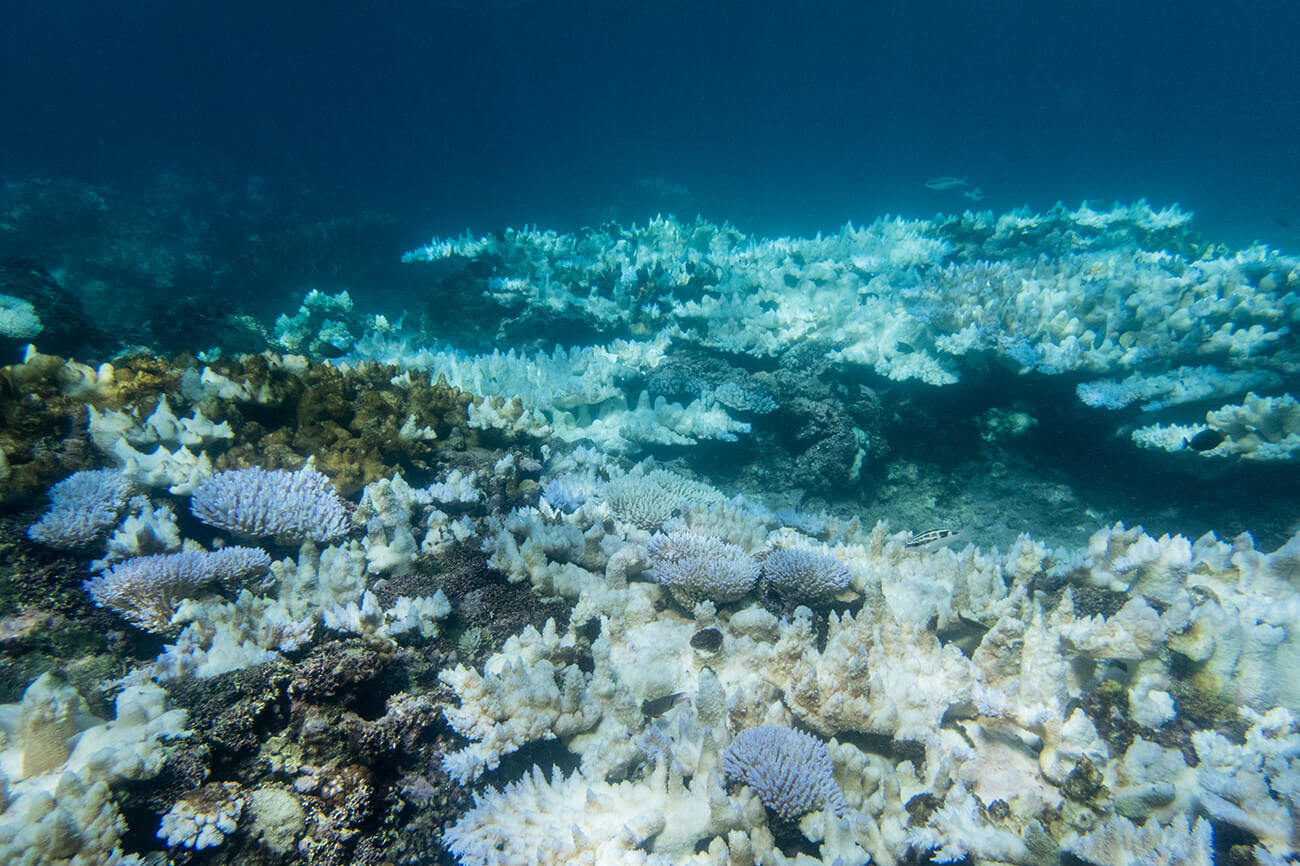
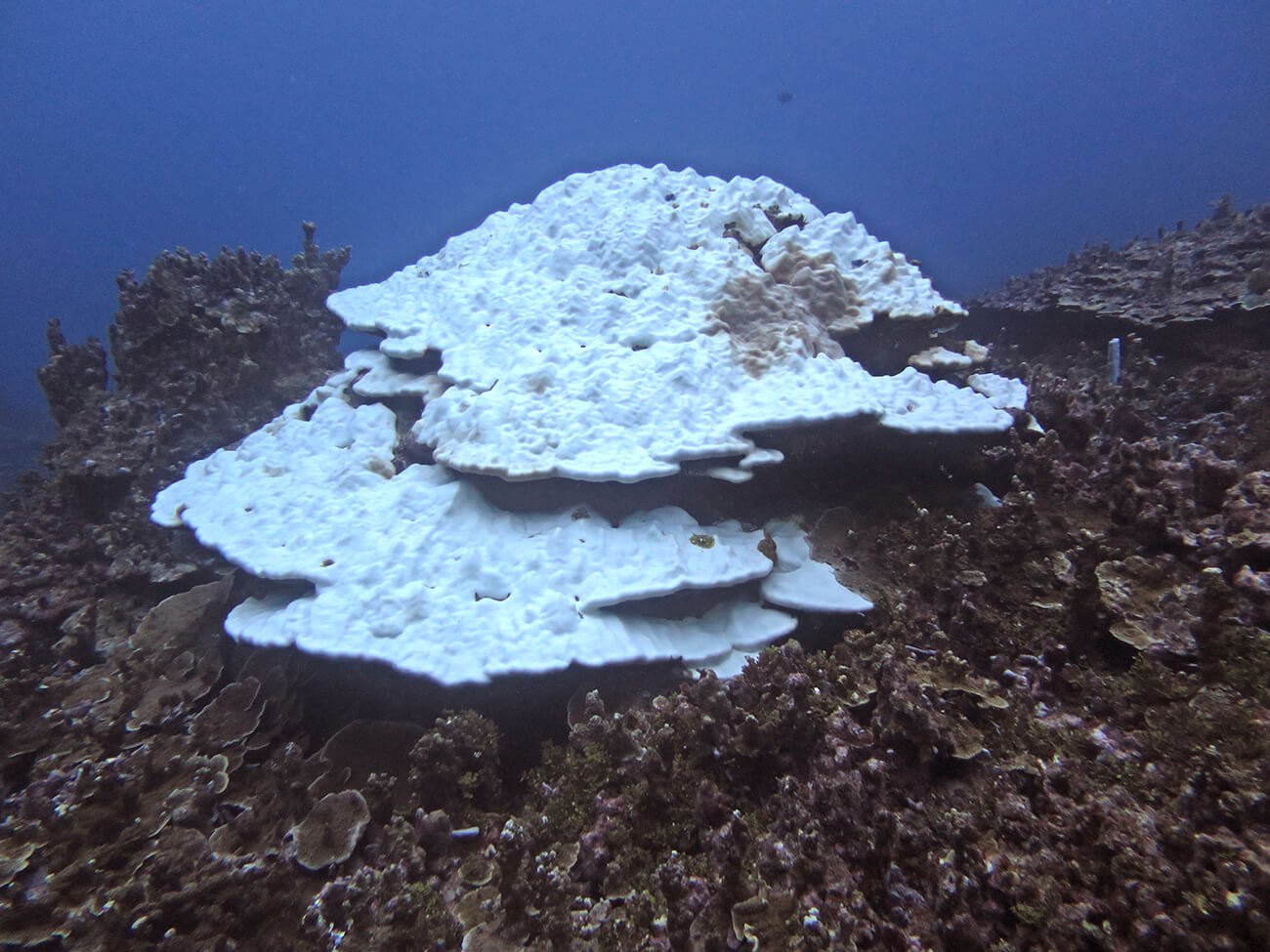
Multiple bleaching events driven by above-average sea temperatures killed off more than one-third of all coral reefs on the island of Guam and up to 60 percent along its eastern coast from 2013 to 2017, University of Guam researchers reported in a new study published online in the journal “Coral Reefs.” It’s the largest known mass mortality of coral reefs on the U.S. territory to be recorded in the last five centuries.
The study is being featured in a special edition of the journal highlighting the impacts climate change–related stressors have on the world’s reefs, including bleaching after the El Niño Southern Oscillation between 2013 and 2017. Bleaching is the process by which corals become too stressed from environmental changes, like warmer sea temperatures, and expel the essential symbiotic algae living in their tissues, causing them to turn completely white and sometimes die.
“Our reefs are undergoing very dramatic changes — very suddenly — that haven’t been seen in the last 500 years,” said first author Laurie J. Raymundo, who has a doctorate in coral ecology and is a professor at UOG and interim director of the university’s Marine Laboratory “We need to protect what remains and rehabilitate where we can using whatever means we can because they are essential to the island, both ecologically and economically. We depend on our coral communities for significant coastal protection, fish habitats, and tourism.”
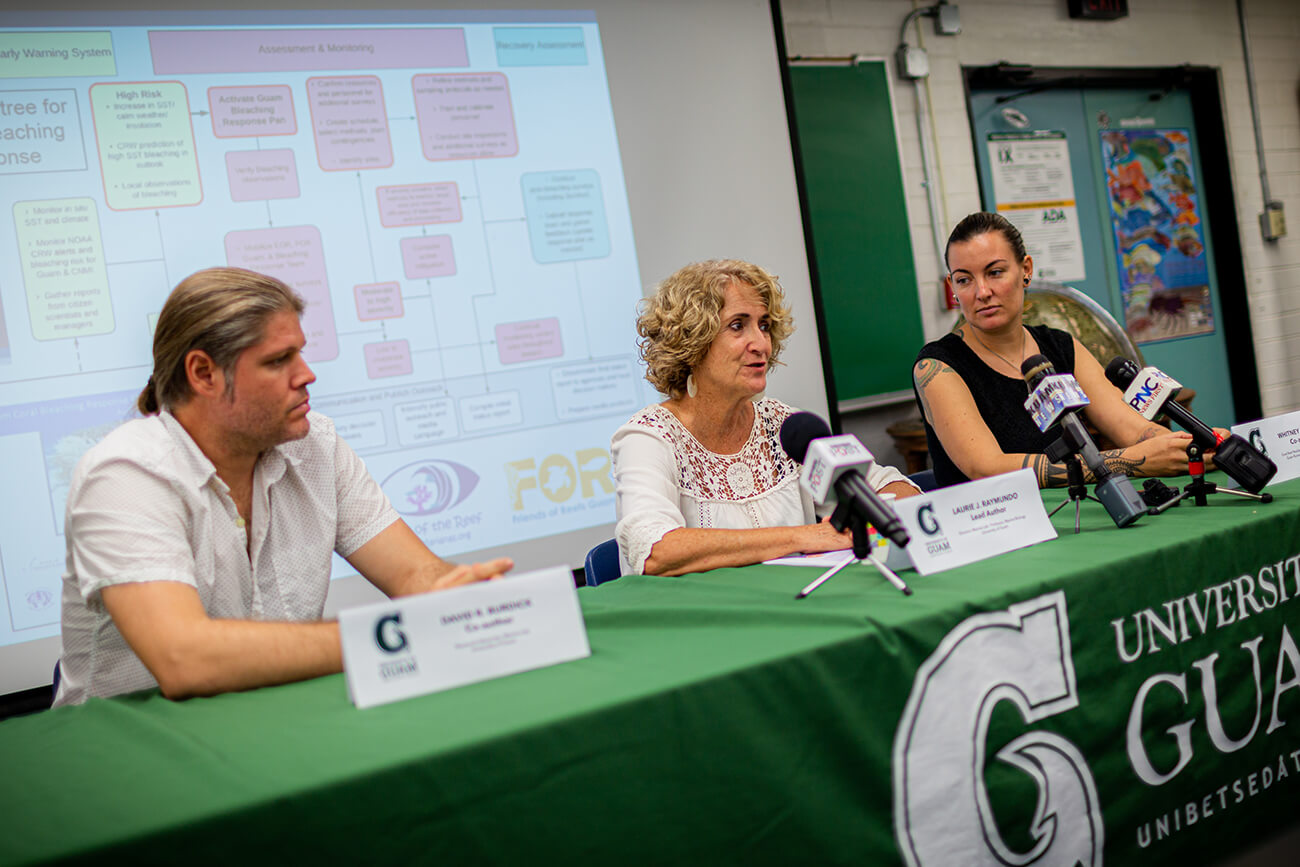
For the study, a team of researchers from UOG, the Guam Bureau of Statistics & Plans, and the National Oceanic & Atmospheric Administration conducted “photo transect” surveys at 46 coral reef sites in the wake of a severe bleaching event in 2013, with repeat surveys on a subset of these sites in 2014, 2016, and 2017 due to repeated bleaching in those years and low-tide events in 2014 and 2015 tied to the warm El Niño phase.
The team found a 34 percent decline in island-wide coral cover at the shallow seaward slope sites and a 37 percent decline at shallow reef flats along the western coast. Shallow seaward slope communities along the eastern, windward coast were particularly devastated, with an estimated 60 percent of live coral cover lost.
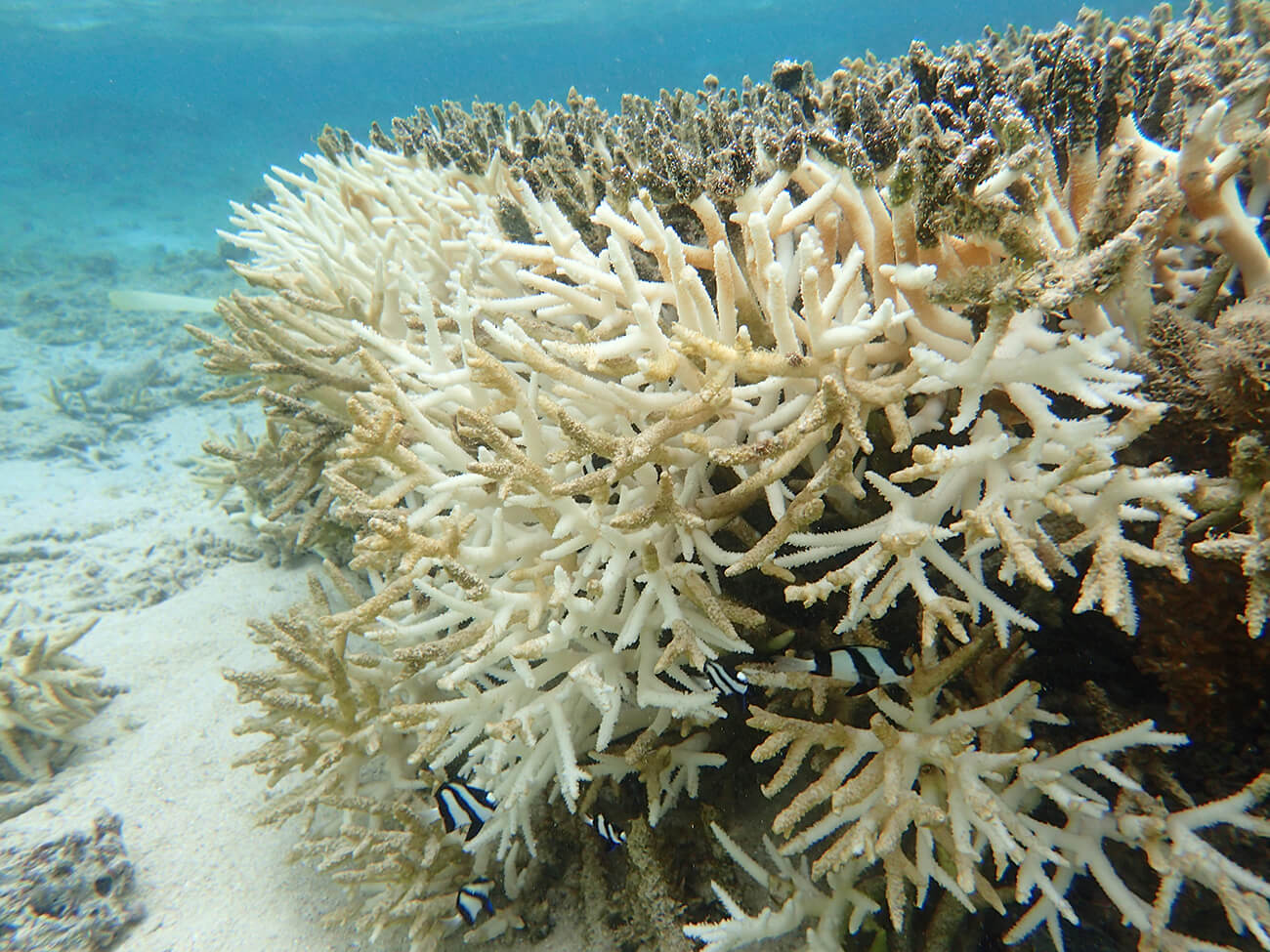
The massive coral deaths and the expected onset of more severe annual bleaching events have prompted researchers and managers from the University of Guam, government agencies, and other organizations to form the Guam Coral Reef Response Team to ramp up conservation and research efforts that aim to ensure the reefs’ survival.
Ongoing documentation and analysis of coral stressors, like bleaching, low tides, and diseases, for example, as well other studies to better understand coral’s response and resilience to climate change, are critical to developing effective reef management strategies for Guam and beyond. Transplantation efforts with more resilient species are underway, too.
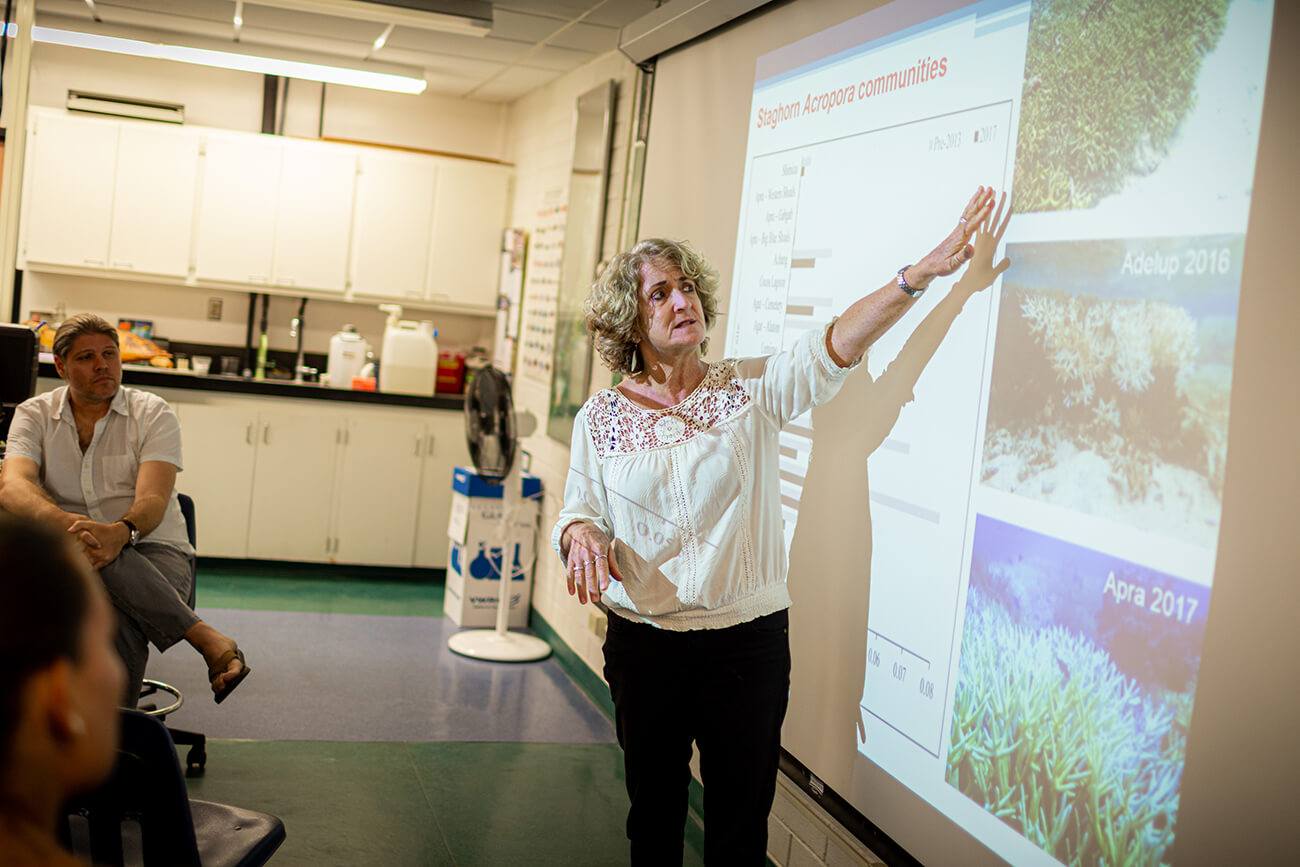
Raymundo’s co-authors on the study were David R. Burdick, research associate, UOG Marine Lab; Whitney C. Hoot, coral reef resilience coordinator/biologist, Guam Bureau of Statistics & Plans; Roxanna M. Miller, coral biologist, Guam’s Long-Term Coral Reef Monitoring Project; Valerie Brown, fishery biologist, National Oceanic & Atmospheric Administration; Travis C. Reynolds, high school science teacher; Jordan Gault; Jacques Idechong, both graduate students at UOG; James Fifer, doctoral student at Boston University; and Ashton Williams, graduate student at UOG. Miller, Reynolds, and Gault are all graduates of UOG’s marine biology program.
